Nestled at a high village in Spiti, Langza Village has its own stories from fossil hunting to a snow leopard sighting. Do you know Langza is one of the must-visit places in Spiti Valley? And yet a lot of people fail to make a trip to it on their Spiti Valley trip.
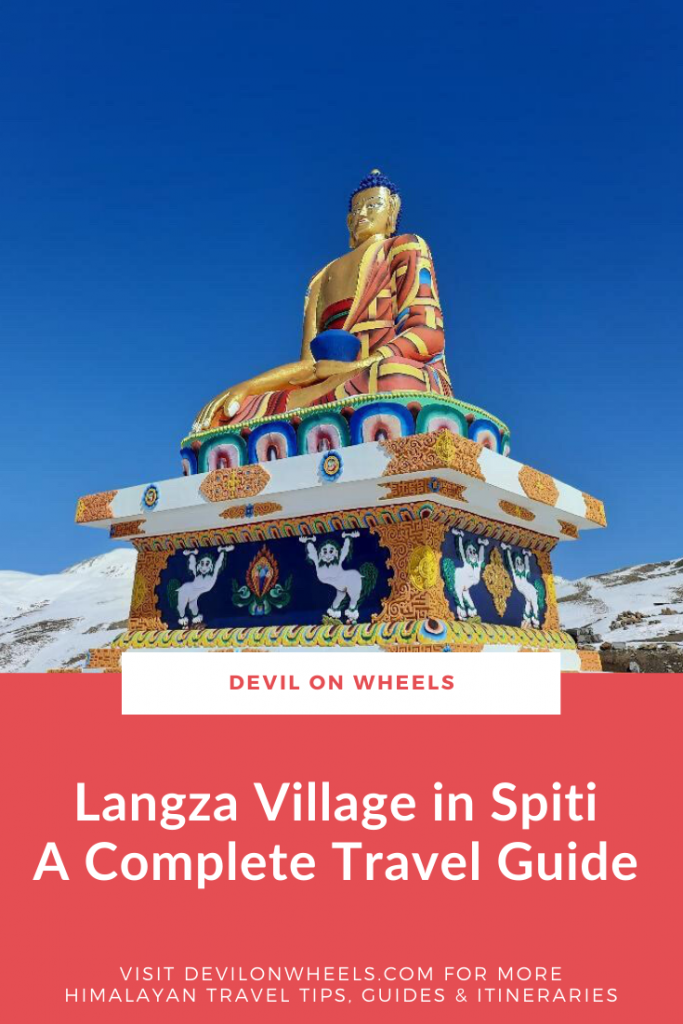
Let’s look at a detailed and comprehensive travel guide for making a trip to Langza Village in Spiti Valley.
Let's quickly dive into the details:
Langza Village Travel Guide
After braving the fury of monsoon, landslides, washed down roads and a grueling ride of almost thirty hours from Delhi (all these hurdles added many extra hours), when we finally stepped out of the car near Battal, we almost screamed with ecstasy as we looked up at the night sky.
It was beaming with millions of stars, something we had never seen before. And we hadn’t even reached the magical valley of Spiti yet. It was just the beginning. This fact was a few years back when many people did not frequent the valley.
The high altitude villages of Spiti valley have a character of their own. The people have a simple but hard lifestyle. The Spitian way of life is totally in sync with the terrain’s unforgiving geography and weather.
There are many hidden gems in Spiti and many of them have come on to the tourist map nowadays. These places include Kibber, Langza, Komic, Hikkim, Demul, Lhalung, Dhankar, Gette, Chicham, etc.. all of which is a day’s ride from Kaza.
In this series of posts, I am going to write detailed travel guides to some of them. If you want to take a sneak-peek into the Spitian way of life, then do spend a night or two in these hamlets.
So, let’s start with Langza Village and explore its mini-world of wonderland!
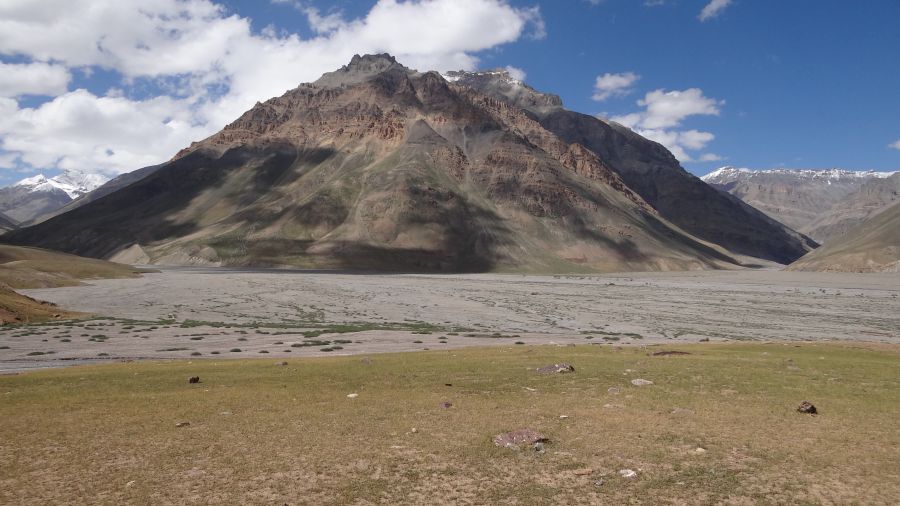
About Langza
Located at an altitude of 14500 feet or 4420 meters, Langza is one of the remotest villages of India in the remote corner of Himachal Pradesh. Greenfields besotted on brown hills and distinctive houses constructed in Tibetan style architecture sums up the pictorial representation of Langza. Envelop this picture with surrounding snow-capped peaks, and it completes the breathtaking view of Langza village.
Spitian villages are geographically demarcated into upper and lower parts. Langza is no exception, lower part of the village is termed Langza Yongma and the upper one is Langza Gongma.
Langza Gongma houses the Lang, local village temple. A massive statue of Lord Buddha guarding the hamlet is the tallest structure here, which is also the most popular picture of Langza on the internet. Another striking feature of the village – the Chau Chau Kang Nilda peak – adorns its landscape majestically.

History
Let’s learn about some of the history associated with Langza village and why fossil hunting is so exciting when you travel up to this village in Spiti Valley.
Archaeological Significance
Langza and many other villages of Spiti were submerged under the ancient geological Tethys Ocean, more than 200 million years ago. It inhabited many varieties of Mesozoic marine animals. It is difficult to imagine that this land could have been a huge ocean!
Around 50 million years ago, the Himalayan range and the Tibetan Plateau emerged from the collision between the tectonic plates of two supercontinents (Laurasia and Gondwana), which made the Tethys ocean disappear. Fossils of marine animals living under Tethys sea are found today in Langza and neighboring villages. Today if you take a spade and start digging anywhere around Langza, you would find a fossil or two to your amazement.
Finding a marine fossil at the Himalayas is one of the most unexpected and exciting things to do at Langza. However, it is equally important to realize the archaeological importance of these fossils and preserve this unique geographical feature of Himalayas.
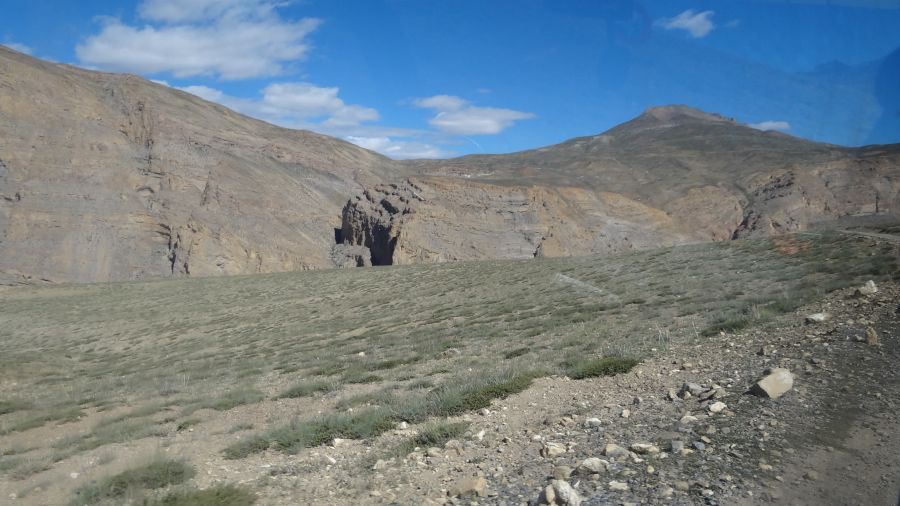
Cultural Heritage
Spiti’s climate is harsh, but the valley is resplendent with ancient traditions, customs, and crafts. In the olden days, due to extremities of climate and difficult terrain, residents of Spiti lived in complete isolation from the outer world. This isolation was the reason why they were able to preserve their culture and local craft.
One such ancient art form is Zama pottery, which was the main occupation of Langza village traditionally. This heritage form of clay pottery originated in Spiti valley because of the presence of yellow and black clay in the region.
The necessity to make pots for various household uses gave birth to Zama pottery. Now steel, plastic and china wares have become widely available in the valley. It prompted the craftsmen to diversify into making decorative pots, lamps, and other artifacts.
Some potters at Langza inherited the art form from their forefathers and still practice it. Agriculture has replaced Zama pottery as the key source of income and occupation for the Langza’s population.
Langza is believed to have derived its name from ‘La’ (mountain pass) and ‘Za’ (from Zama). According to another theory, Langza’s name is adopted from ‘Lang’- the village temple.

Location
Langza village is in the heart of Spiti valley, 16 km away from the townlet of Kaza, the headquarters of Lahaul and Spiti.
Best time to visit Langza
Of course, the best time to visit Langza does resonate with the best time to visit Spiti Valley itself. Unless you can reach Kaza in Spiti Valley, there is no point thinking about visiting Langza village as well.
Winter
In winters, Langza weather is cold and dry. Winter months are extremely harsh, with the Langza temperature dropping as low as -20 degrees. Several feet of snow blankets the region, which makes reaching Langza a challenging task in this season.
Rohtang pass shuts down due to heavy snow, which strikes out the option of Manali to Kaza drive in winters. Though depending on road conditions you can still reach via Shimla-Kinnaur (Hindustan Tibet road).
For more details on winter adventures to Spiti read our article on How to plan a trip to Spiti Valley in Winters
Summer
Summer witnesses very bright sun in Langza, as altitude increases the intensity of sunshine. Though nights are still cold and require woolens clothing. Summer, spring, and autumn are the most convenient seasons to visit Langza because of ease of accessibility and road conditions.
Monsoon
Monsoon months don’t see much rain or no rain at all. But the roads leading to Spiti from Manali or Shimla witness rainfall and landslides. Roads become slushed and erupted, making it a battle to drive on. Expect long delays and unplanned stopovers due to weather and road conditions. All these make for a compelling case to avoid monsoon travels to trans-Himalayas.
The best time to visit Langza or Spiti valley depends on the route you take and the kind of experience you are seeking.
For a detailed and month-by-month guide on when to travel to Spiti, please refer to our article ‘Best Time to Visit Spiti Valley – A Month by Month Guide’

Top Things to do in Langza
Langza is a small and remote village in Spiti, devoid of much tourism intervention, except for the development of some homestays in the recent past. The best thing to do at Langza is to live and experience the thousand-year-old culture, the company of its people, and camping under the starry night. Still, let’s look at what else you can explore during your stay in Langza.
The Langza Buddha Statue
As you approach Langza from Kaza, you start seeing a humongous golden colored statue of Buddha from a kilometer away. In the serenity which surrounds all mortal beings at Langza, this statue of Buddha seems like watching over the world (given the elevation of Spiti valley, it might be true. I am sorry, but I do not know about the Langza Buddha statue height.
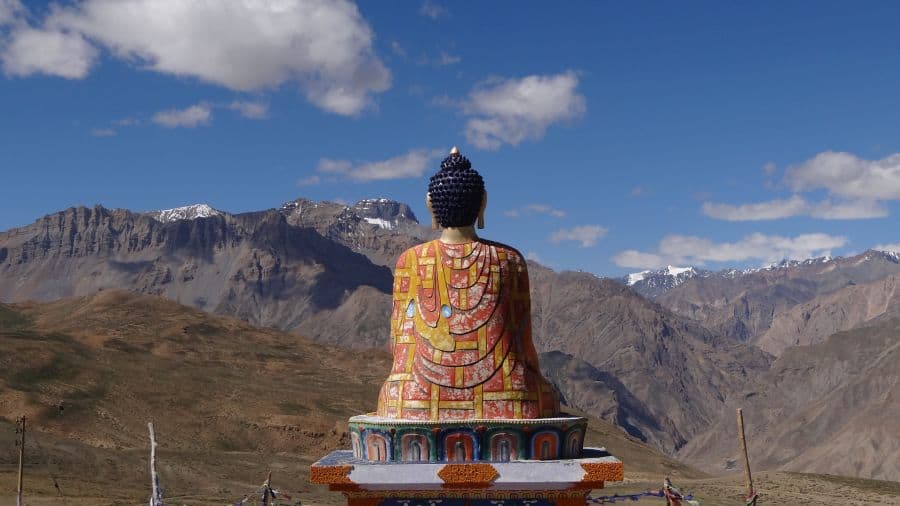
The Lang or Langza Gompa
Lang, the ancient village temple is a seat of great significance for locals as they believe that all the deities of Spiti Valley reside here, like a spiritual nerve center of the valley. Also, known as Langza Gompa.
Langza Village Fossil Hunting
Langza is a treasure trove for the archaeology researchers. Several locations at Pin valley and Spiti valley are rich in the marine fossil. Among these places, Langza is one where these fossils are easily discoverable and the village has a high concentration of Ammonites – a kind of fossils.
Most visible at Langza, ammonites are spiral-shaped fossils dating back to the late Jurassic era. They became extinct during the same period when dinosaurs did. There is a chaudua (local name for fossils) center in the village. You might see little kids or local shops selling these fossils to you for anything between Rs 10 – 100.
There is a reason that Langza is known as the fossil village of Spiti Valley.
Travelers are more than glad to take fossils home as souvenirs. However, with an increasing number of people doing this, the fossils themselves are becoming extinct in the region. Locals and travelers must understand the importance of containing these fossils within the area. They are not just archaeologically significant but are also a heritage. Taking them away might lead to destroying a key link in the geological history of our subcontinent.
I urge all our readers to not buy or take these fossils from Langza or its neighborhood. Instead, opt for the mud replicas of fossils made by locals or take home Zama pots as souvenirs. This practice will in turn help in promoting the dying art of Zama mud craft as well.
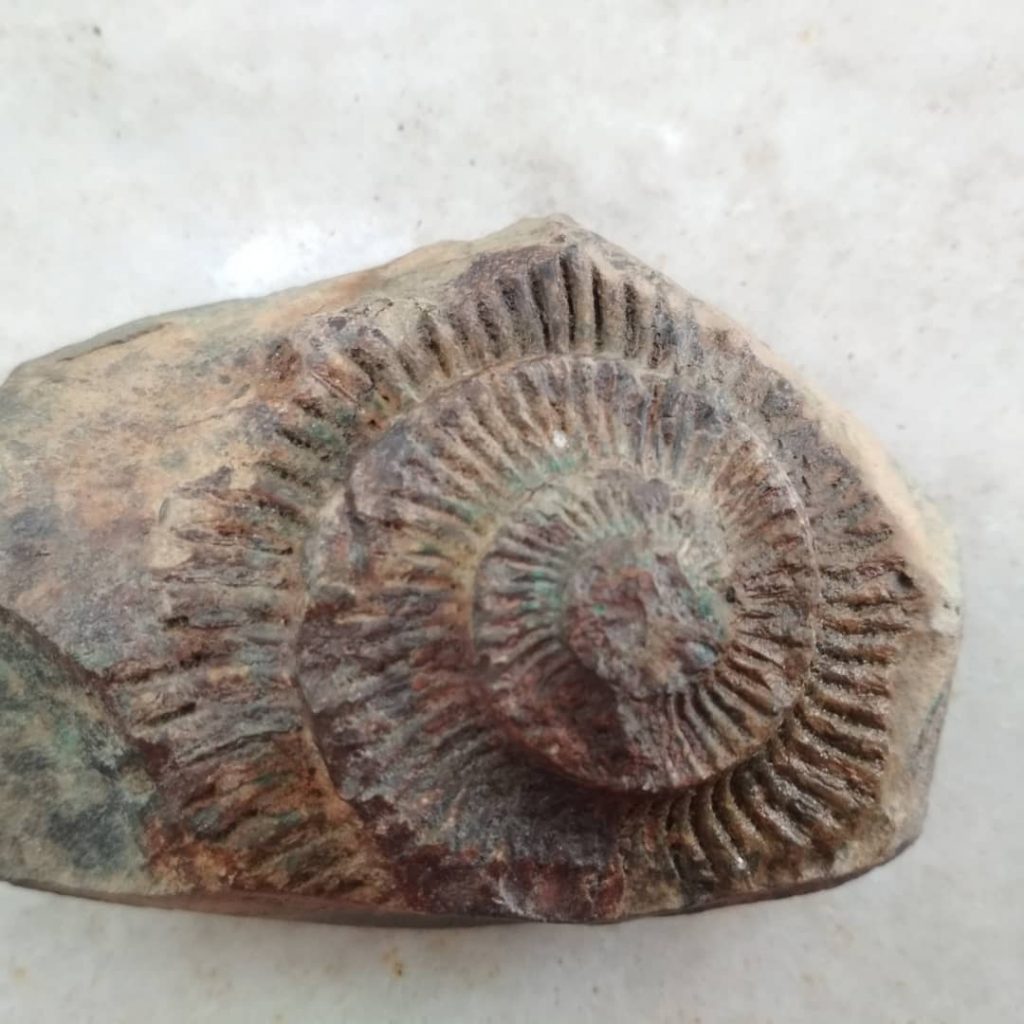
Walks or Camping near Farms
Fields of Langza make a greater part of the village and imparts an astoundingly green look to the otherwise brown and white cold desert. The uneven elevation of this landscape creates an illusion of sorts and looks mystical.
In the old era, when the weather of Spiti was harsher, and connectivity to the world almost zero, the only crop is grown by the villagers here was a potato. Now with the warming of our planet and better farming tools, crops such as barley and sweet peas are also grown here along with potatoes.
You can also go camping near the farms of Langza village.
However, the only source of irrigation for farming at Langza is still the water of streams originating at Chau Chau Kang Nilda peak. If, unfortunately, there is lesser snowfall during winter, it directly impacts the creation of water streams and hence the farming output. Beneath all the beauty lies the challenging living conditions.
Agriculture is now the main occupation of Langza village. People depend on it for their food as well as a source of income. Now tourism is developing in the region and has also added to the income of residents. However, livestock rearing and farming are still the key occupations.
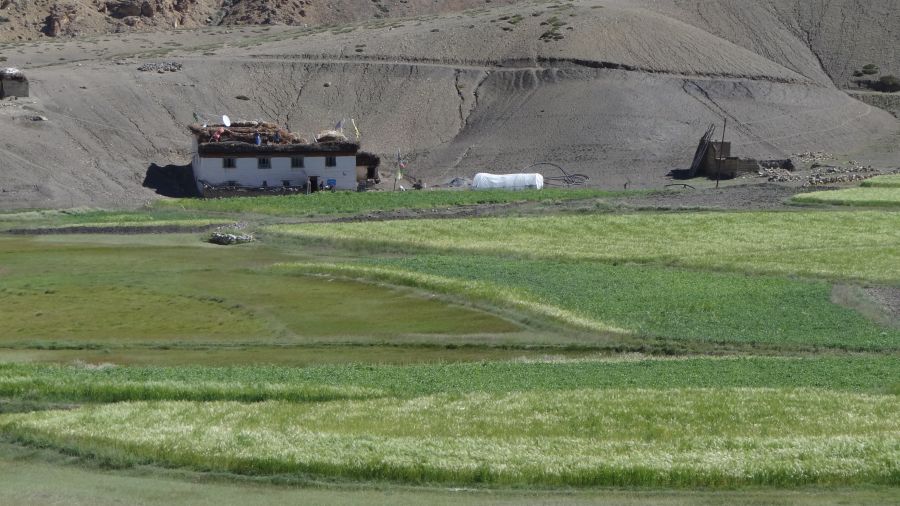
Night Photography at Langza
Langza is heaven for photography enthusiasts. With minimal techniques and software, one can click the most beautiful of pictures here. Every nook and corner of Langza is worth capturing in the camera. Because this is unlike anything you will ever see in a city or even lower Himalayas. The light during the day is crisp because of the height, and clear skies provide the perfect background for day-photography.
Night photography in Spiti valley is a different ball-game altogether. When you can see the great Milky Way with naked eyes, a giant of a Moon and millions of stars against the clearest of the sky, what more can you possibly ask for to give you the clicks of your lifetime?
So, do not forget to pack your camera and accessories to bring to this paradise. Do check out our article on how to pack and take care of laptops, cameras and other gadgets at high altitudes.
Chau Chau Kang Nilda Peak
Langza village flourishes under the shadow of a snow-covered peak, Chau Chau Kang Nilda (translated as snow-capped mountain princess of the sun and dawn). The Legends and the Myths galore about this peak in the village, like most old Himalayan villages. It is the tallest peak in the region, towering more than 20,000 feet.
The view of the peak from Langza is majestic and peaceful. If you want to attempt climbing the peak, you would need professional guides, proper gear, and prior experience of mountaineering. The height and clime make it a challenging ascend.

Snow Leopard Spotting in Langza
Langza and surrounding areas in the Spiti valley are home to the elusive snow leopard. Many travelers stay at Langza during winters in their quest to have a glimpse of the animal. For the adventure seekers, looking for the big cat in a landscape covered with thick snow is an experience of a lifetime.
According to a recent news report, snow-leopard sightings have increased in Spiti valley. The success rate of snow leopard sightings in Spiti is over 50 percent, which is the highest in the world. The animal has found safe heaven in Spiti because the residents have started protecting it and learned to live with it.
You will need a local guide to help with snow-leopard spotting who knows the trails. Several tour operators in Kaza arrange for the excursion.
Experience the Lifestyle of Spiti
Apart from what I just described above, you can experience the real-life in Spiti by staying with any of the homestays in Langza village. It will help you get closer to the culture and people of this beautiful village.
People to know
Despite life’s challenges, people of Langza are a happy and kind lot. They are generous and welcome strangers in their homes for a meal and board. There are no accommodation options in the village except for a few local homestays. They are happy to share a slice of their lives with you. You can, of course, do camping in Langza nearby local people’s homes.
Culture to experience
People of Langza follow the Sankayapa sect of Buddhism. The land’s vicinity and geographical similarity to Tibet have influenced its citizens for centuries. There is no doubt that followers of Buddhist practices are more satisfied and joyful than the rest of the world. Maybe that’s the secret of Langza’s happiness too. I believe that their unique cultural and religious practices also play a significant role in adding charm to their lives.
Their rich heritage is reflected in the temples, monasteries, and various art forms, especially Zama pottery. There are very few potters left in the village who are trying to preserve this dying art. If you get a chance, do meet one of the potters and try to get a first-hand experience at it. They would be happy to make a pot or two for you!
Houses to stay
A terrain as hostile as Spiti, require houses which are not just comfortable but are also weather compliant. Langza is dotted with ‘mud-brick’ houses, built in the symmetric and uniform architecture. You notice them instantly as you enter the village, as they give a unique look to the landscape.
A typical house in Langza consists of a huge kitchen, which is also the family room as most families like to eat together near the heat of ‘Angeethi’ and stay in the warmth of the kitchen. There is a dry toilet in every house, which comprises of four walls and a pit dug in the floor. Besides this, they all have an area for household animals, storage and a few other rooms.
The brick, mud, and wood structure help keep the house warm from inside during extreme winter, even when the exterior is covered with deep snow. All the houses are painted in white, with a blue window and red border. The similarity is alluring. Square house with several square windows, here is a glimpse.
Life to live
Langza is an unusual village, and changing seasons bring a huge change in the lives of its residents. The sun is harsh in summers, and mountains are brown. There is barely any or no rain during monsoon months and winter is unforgiving.
Summer is the time of work for Langza. Everyone works on crops (barley, potatoes, and peas), take care of their flock of animals, and stock up for winter months. Things have improved now with better road connectivity, but winter is still not the time to venture out. Kaza is the nearest town and market. When you visit Langza, some villagers might ask you for a ride till Kaza, most of us are more than happy to help those smiling red faces 🙂
The barren winter is the season to eat, drink, festivities, and to chill (quite literally!). One of the residents told us that their daily routine during winter months goes like – they wake up, clear up the piled-up snow from their yards, take care of the livestock and wait out the tough months. The bone freezing Langza village temperature doesn’t leave much scope for going out for work or food.
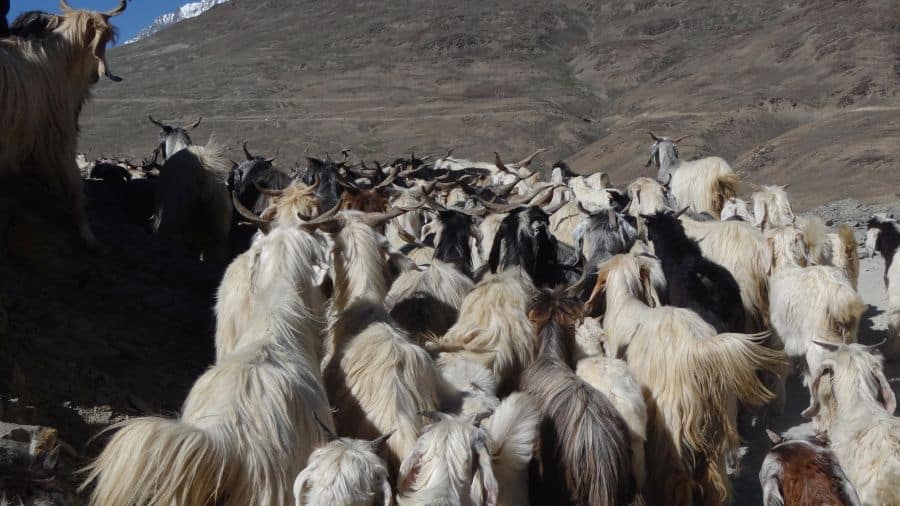
Food to try
Eat local, and that is your only option at Langza! The Locals are warm and welcoming, like in most Himalayan villages. If you are spending a night at Langza, your hosts will treat you with delicious local delicacies. Simple home-cooked meals here comprise rice, dal, rajma, or black kidney beans and mixed vegetables.
Tibetan fares are such as Thukpa, Thenthuk, the local stew is common too. Barley is a local crop here, and villagers make the most of it – from bread (with honey) to porridge and laddoos to tea. Yes, Barley tea. Try if you can get to taste it there. It is also the source of making local liquor (barley beer).
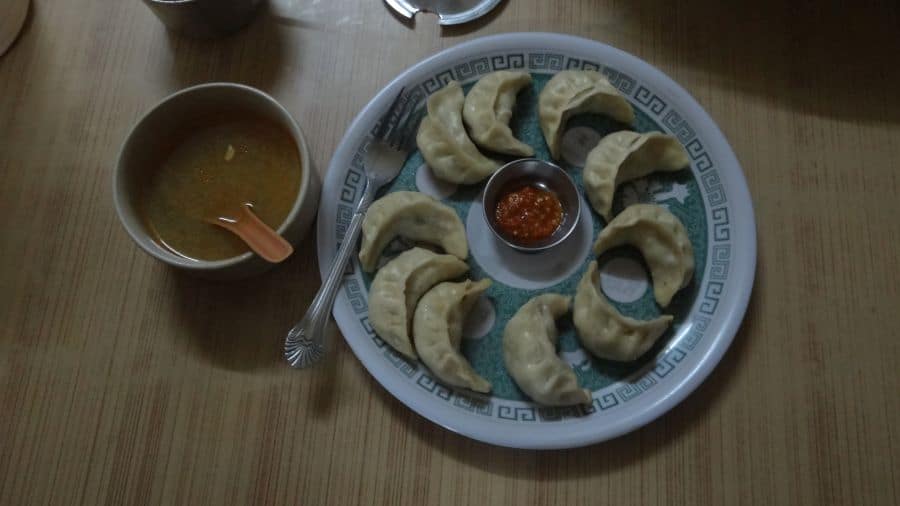
Breakfast usually is made of bread, butter, jam, and eggs along with mint tea or ginger black tea. I loved the local black tea with lots of ginger in it. The drink gave ultimate comfort in that cold Langza weather.
How To Reach Langza village
Langza is a remote village and does not have a direct rail or air connectivity. You can travel to Spiti from Manali side or from Shimla – Kinnaur Valley side.
By Road
If you are already in Kaza, then Langza is almost an hour’s drive away (16 km). There aren’t any direct buses from Kaza to Langza. Your options are limited here; you will have to either hire a taxi or hitch-hike. Some adventurous souls walk the entire distance.
Kaza is connected to Manali, Shimla, and Chandigarh by a network of buses. Shimla and Chandigarh buses reach Reckong Peo, and from here you have to board another bus to Kaza.
Another option is to drive to Kaza from any of these towns. We reached Manali from Delhi, boarding an overnight bus. From Manali, we took a detour to Chandratal, spent a couple of nights there and then proceeded with our onward journey to Kaza. You can also make a trip from Langza to Chandratal in case you are returning the same route.
It is imperative to have some experience of driving on tough mountain roads if you choose to self-drive on this route. Roads are dangerous, hostile, flooded with water at times and stones fall overhead due to the fragility of the terrain.
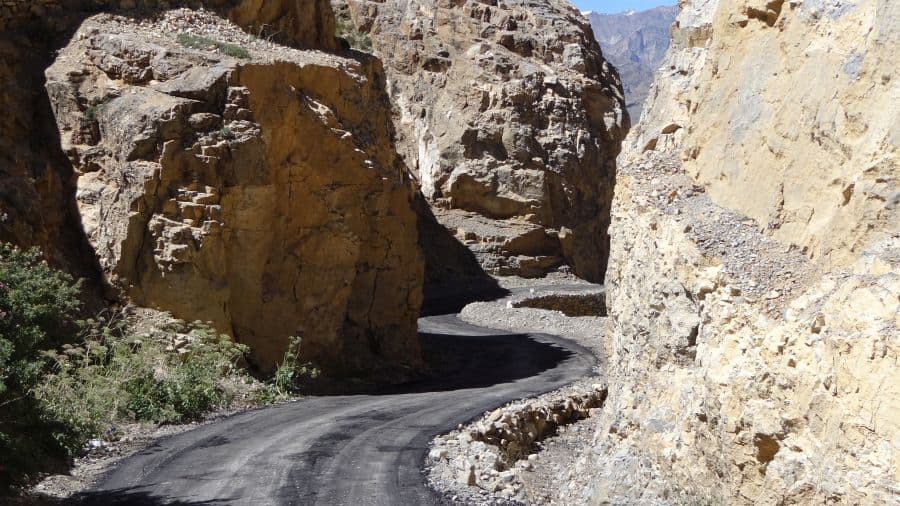
By Train
The nearest train station is Joginder Nagar (364 km from Kaza), which is a narrow gauge station and receives a train from the Pathankot railway station (broad gauge). The major nearest railway station is Chandigarh (500 km from Kaza).
By Air
Chandigarh is the nearest major airport and Bhuntar (Kullu) is the nearest domestic airport with limited flight connectivity. You can also fly to Shimla as well and then make a two day trip over Hindustan Tibet Highway to reach Langza.
By Public Transport
The onward journey in case of rail and air travel from Shimla, Manali or Chandigarh has to be via road (taxi or self-drive or by bus).
For details on public transport around Spiti valley, refer to our previous article How to make a budget trip to Spiti Valley by public transport.

Where to Stay in Langza
Langza village’s increasing popularity among travelers has encouraged the development of homestays in the village run by locals which are built in the traditional Spitian way. Hence, more and more remote villages of Himachal Pradesh are getting the exposure and offering stays.
These homestays in Langza provide basic facilities and home-cooked food. Most of them run on solar power, ensuring an uninterrupted supply of electricity. Most of the hosts are happy to help their guests with local excursions and treks. Here are some recommended homestays:
Tenzi Homestay Langza
This is a five-bedroom home-stay with comfortable beds and attached bathrooms (only 2 rooms). Per night stay with breakfast and dinner costs INR 700- for rooms with attached bath and INR 1000-for rooms with separate bathroom. You may contact the host at +91-9459566627. See more details in our article on homestays in Spiti Valley.
Lara Homestay Langza
This homestay is an amalgamation of tradition and modernity. It has five comfortable and clean rooms, furnished locally but provides modern facilities like attached bathroom, western toilet, room heaters, and hot water geysers.
However, all these facilities come at a considerably higher cost than other options. One night stay here for double sharing and two meals are for Rs. 3500. You may contact the host Lara Tsering at +91-9418537689.
Itinerary for a trip to Langza
Langza can be included in your Spiti Valley itinerary as a day’s trip from Kaza. However, I recommend spending a night at any of the homestays in the village. You will love to experience local hospitality and culture.
Day 1 | Kaza to Langza
- Reach Langza from Kaza via car or taxi in the morning.
- Visit the village Lang (the temple) and the statue of Buddha.
- Stroll through the fields and try your hand at pea-plucking (if in season). You might just spot yaks and sheep lazing around.
- Meet with the local Zama potters and experience the ancient mud art. Don’t forget to take souvenir pots.
- Explore marine fossils, visit the Chauda center in the village. Collection and possession of fossils are illegal, though locals sell it for small amounts of money.
- Spend the night at a local homestay and enjoy their hospitality.
- Try night-sky photography, if it interests you. The opportunities for photography at Langza are endless.
Day 2 | Langza – Komic – Hikkim – Kaza
- Head for the neighboring villages of Hikkim or Komic Village. Spend a night at these villages if you wish or head back to Kaza the same day.
- If high altitude treks interest you, you can go for the two small lakes (Tsonyeti and Chumo Tso) near Langza. They are located at an altitude of 14,000-15,000 feet. Given the distance and elevation, reserve a day for the hike. Return to Kaza the next day.
- You can also plan Langza to Chandratal on this day to save a day.
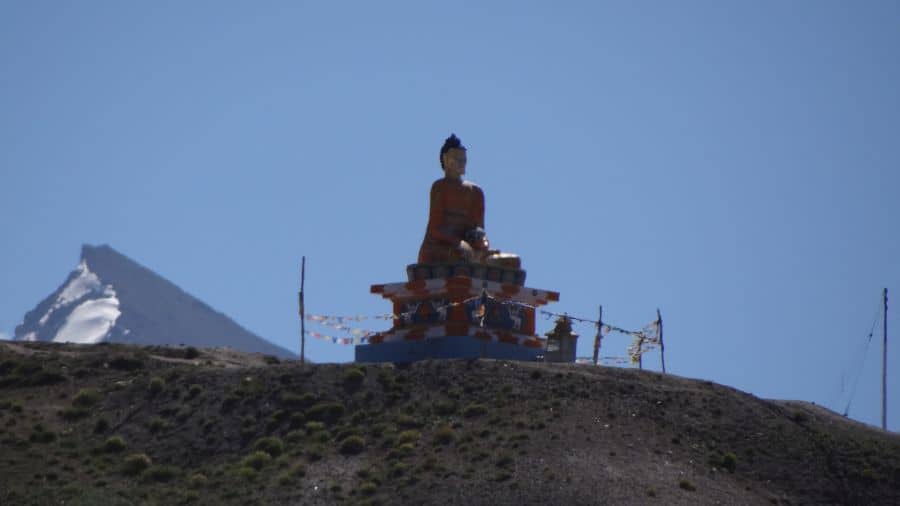
Important Tips
- Langza is located deep inside a cold desert. The weather gets harsh. The terrain and ecology are fragile, and landslides are common. The supply of electricity is sparse and irregular, except for establishments that run on solar power. Go prepared with a basic list of things to carry on a Spiti trip.
- At more than 14,000 feet, Langza poses AMS challenges to many travelers. Although, if you acclimatize well at lower altitudes when traveling to Spiti via Kinnaur Valley, you are unlikely to experience AMS at Langza. Still, the air is thin, and the altitude might take a toll. If you are planning for trekking in the region, then prepare for contingencies.
- There are no mobile phone signals at Langza, except BSNL/MTNL – which again depends on the availability of electricity powering the mobile towers and weather conditions. Outside Langza (on roads), even BSNL signals become weak or disappear altogether. For details on mobile phone connectivity in Spiti valley, refer to our article on 11 Tips on Mobile Phone Connectivity in Spiti Valley
Be a Responsible Traveler
Spiti valley is ancient, and it succeeded in preserving its environment and culture only because of the difficulty in reaching this hostile terrain. Some paleontologists describe Spiti as the ‘Museum of Indian Geology.’ This fact itself sums up the importance of preserving this ecologically and geologically sensitive zone. Rising tourism in the past few years has eroded the valley in several ways. DoW has been leading many initiatives to promote sensible and responsible tourism in the region by educating the locals and travelers. Empowering the locals with eco-friendly practices and encouraging travelers to follow these practices is extremely important and is also our duty.
Rising tourism in the past few years has eroded the valley in several ways. DoW has been leading many initiatives to promote sensible and responsible tourism in the region by educating the locals and travelers. Empowering the locals with eco-friendly practices and encouraging the travelers to follow these practices is extremely important and is also our duty.
Conclusion
Langza is a distant and off-beat place in western Himachal which presents unique experiences to travelers or explorers. If you want to visit the place with family, plan well in advance and prepare for the expected challenges.
This place gives you tranquility, the lifestyle of the people here teaches us human values and the importance of things that we take for granted in life. The landscape leaves you spellbound.
Have a travel question?? You can follow me on Instagram and subscribe to my YouTube channel to ask your travel questions in a direct message on Instagram or comment on my YouTube videos.
I hope, this detailed guide to Langza will help you to plan your journey better and make it a memorable one.
Do you still have any questions or suggestions or need any help in planning your trip to Langza? If yes, please feel free to post them either in the comments section of this article below or direct message on Instagram. You can also take guidance from many travel experts in our DwD Community Forums and discuss your upcoming travel plans.
If you like the article, please feel free to share it with any of your family or friends who are planning a trip to Langza or Spiti Valley. Happy traveling to you!!!
Do follow @soulful_worldview on Instagram for updates on my next adventure.


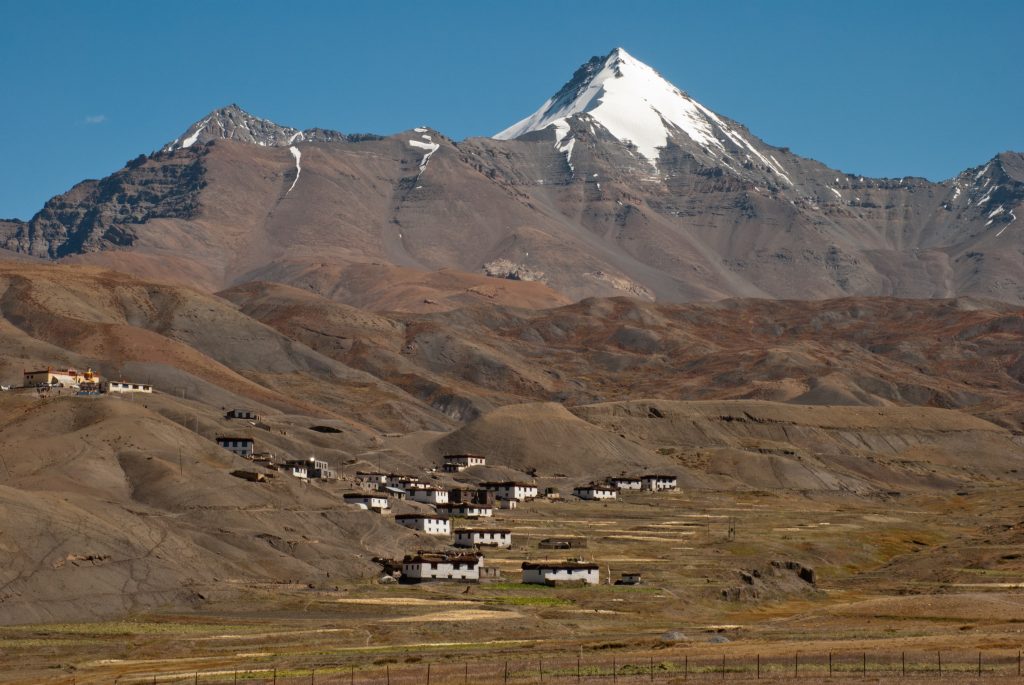

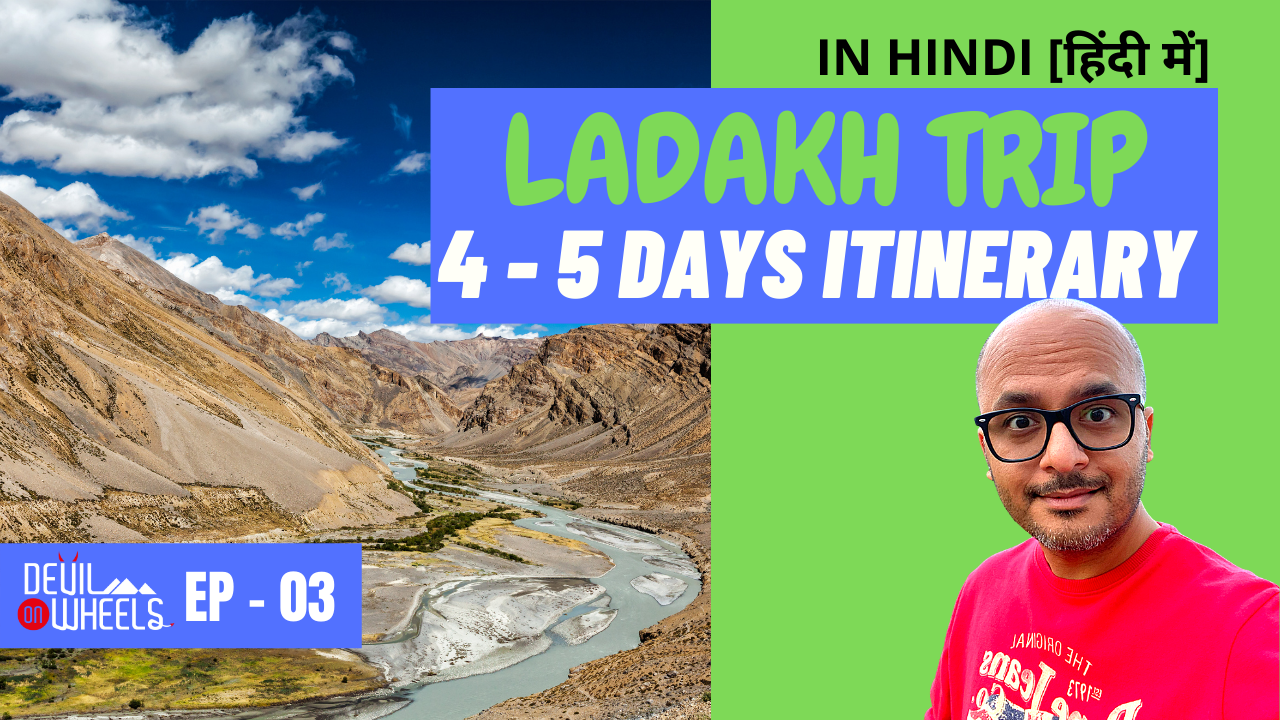


3 Comments
Comments section gets closed in 90 days. To ask your travel questions, you can follow my YouTube Channel for a faster reply or for a much slower reply follow me on Instagram. :)
please provide budgetry tour for two adults to be covered in 9 days (from saturday to sunday) in the month of june, from Delhi to Spiti to Delhi via Shimla. – thanks
Thank you Dipanjan for your kind words. We try to give comprehensive information to travelers, in order to plan their journeys better. In case you need any help with your upcoming trip please write to us.
I had done the Spiti circuit last year June, and thanks to DOW for all the invaluable information. Without this portal, my travel wouldn’t have been as smooth as it was. We are planning again this year April, with intention to stay at Langza and Tashigang.